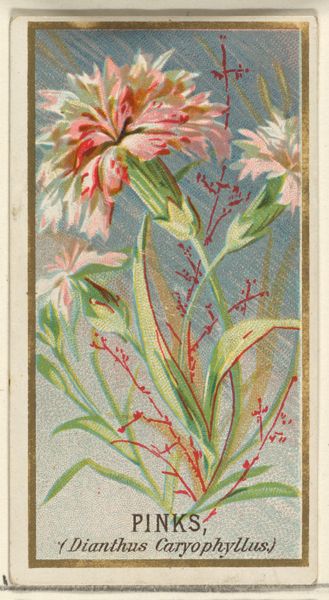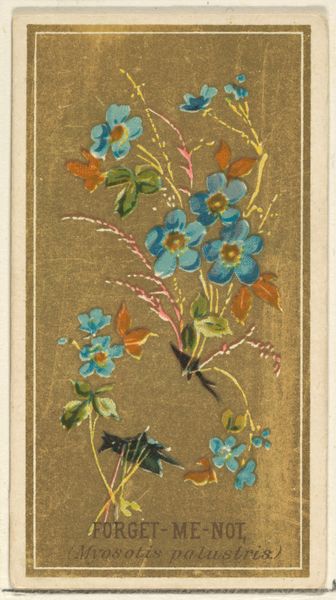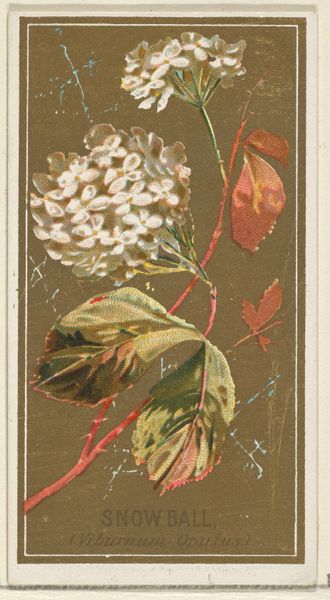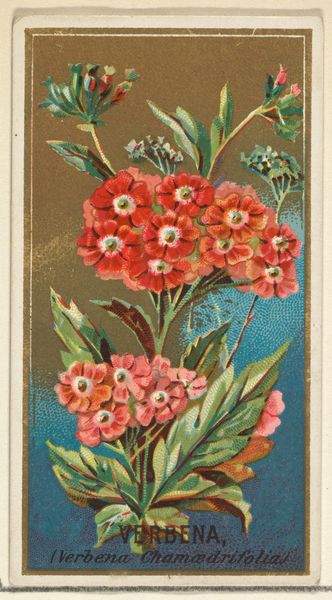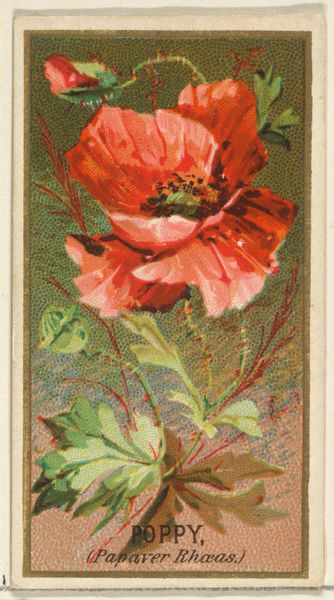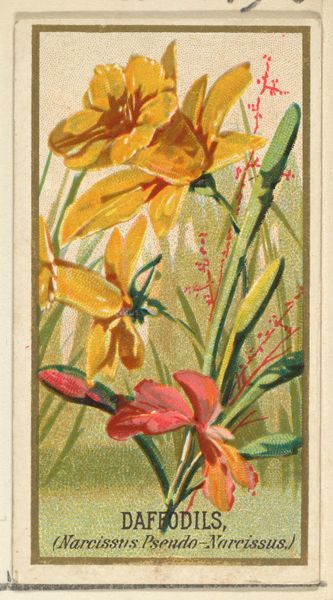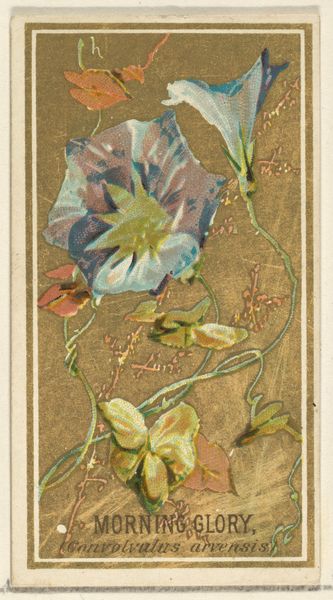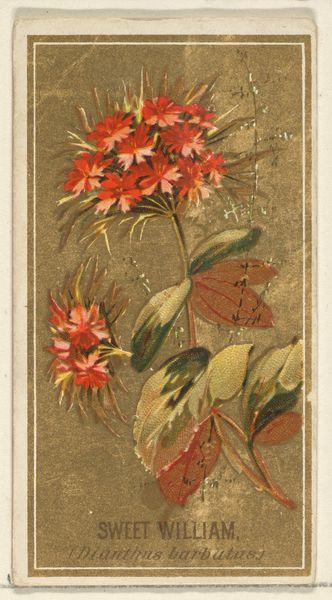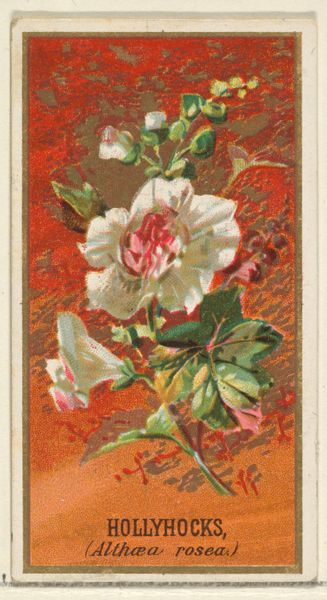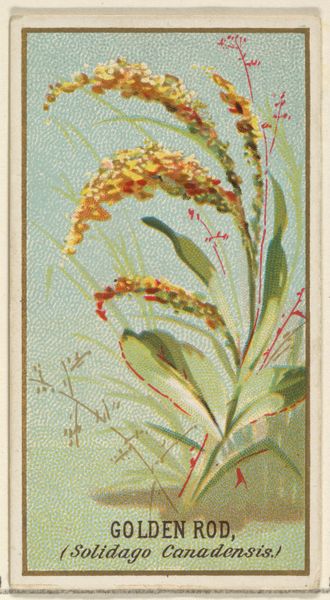
Heliotrope (Heliotropium Peruvianum), from the Flowers series for Old Judge Cigarettes 1890
0:00
0:00
drawing, print, watercolor
#
drawing
# print
#
impressionism
#
watercolor
#
botanical art
#
watercolor
Dimensions: sheet: 2 3/4 x 1 1/2 in. (7 x 3.8 cm)
Copyright: Public Domain
Curator: Allow me to introduce "Heliotrope (Heliotropium Peruvianum)", a botanical illustration created circa 1890 by Goodwin & Company as part of the Flowers series for Old Judge Cigarettes, currently held at the Metropolitan Museum of Art. Editor: My initial reaction is how wonderfully somber this tiny watercolor print is. There’s a Victorian melancholy to the muted tones that appeals immediately. Curator: The work, printed with watercolor and drawing, emphasizes structure through layering, no? Notice how each petal suggests a larger composite, each bloom offering an aggregate form of impressions. Editor: I see the careful composition, of course, but I immediately wonder about the use of botanical imagery in advertising. Given the historical context, could these floral motifs reinforce late 19th-century ideals of femininity and domesticity, subtly associating smoking with a cultivated sensibility? Curator: Possibly, though I find the appeal rests largely within the design. Note the dynamic balance achieved through asymmetrical arrangements—stems crisscrossing, different blooms set at different heights. It is this delicate asymmetry that keeps it visually alive. Editor: It’s precisely the design choices and medium that speak to class and power, surely? The fragile medium and conventional botanical subject reinforce Victorian ideas, providing perhaps an almost insidious function as social currency through the purchasing power of tobacco consumption. It is as much a design choice as it is a choice that places it into the social structure. Curator: A fair point, but I appreciate the economy with which the illustrators achieved this balance. Note the slight tonal range creating the individual details within the blossom. Editor: Seeing this tiny advertisement now, I'm left to consider how a society then viewed both women, botanicals and commercial objects through the subtle embedded signifiers layered within everyday capitalist systems. Curator: I, conversely, remain impressed by the overall construction and artful combination of graphic constraint. Editor: Ultimately, it offers a telling insight into societal desires and expectations of gender, class and consumption of a bygone era.
Comments
No comments
Be the first to comment and join the conversation on the ultimate creative platform.
